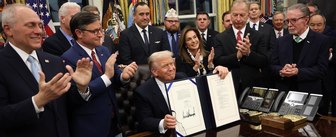The coronavirus is touching more and more Americans, through illness and even deaths. In the latest Economist/YouGov Poll, 7 percent have a close friend or family member who has died from complications of the virus. Even more know someone who has tested positive. 61 percent have heard of COVID-19 cases in their local communities. A majority are living in communities with stay-at-home orders.
And a growing number (69%) are worried about contracting COVID-19 themselves. That's up from 39 percent at the beginning of February.
Only a few weeks ago, in mid-March, did a majority nationwide say they were very or somewhat worried about contracting the virus. A majority of Republicans were not worried until two weeks ago. Most Democrats were worried at the beginning of March. Concern reached urban areas first, but now most of those living in rural parts of the country worry about personally contracting COVID-19.
The economic impacts are sizable – Americans worry about recession and unemployment. Some have lost work, while half of those who are able to work from home say it’s been difficult (that’s particularly true for those who have children at home). Americans have made changes in their daily lives, with many consuming more news — and more television in general.
Among those staying at home, nearly half are watching or reading more news, almost as many are watching more television, and one in four admit to eating more. Fewer say they are drinking more alcohol or exercising more. There are gender, age, and political differences. Younger adults are more likely to report drinking more alcohol, exercising more, and playing more video games. Women are more likely than men to be using video-conferencing apps to talk with family and friends, and most women are consuming more news than usual.
Women are more likely than men to say they are eating more while staying at home. One in five men says they are eating more now, compared with one in three women. (30% of women say they have gained weight since the stay at home orders have gone into effect, compared with 24% of men, while men and women between the ages of 30 and 44 are especially likely to say this.)
Democrats are more likely than Republicans to say they are watching more TV, but there is little party difference when it comes to saying they are reading more. Overall, about one in five (18%) Americans say they have learned a new computer skill during the crisis. Most give the states credit for making the stay at home regulations understandable.
About four in five (81%) say the orders have been completely or somewhat clear (44% say they have been completely clear). Only 9 percent believe the stay at home rules have been “not very” effective or “not at all” effective in controlling the spread of coronavirus. A majority (55%) say they have been extremely or very effective. Few admit to violating the rules in any way.
Most believe the social distancing rules will go on for a while. Nearly half say it will take several months or more before they are lifted, though about one-third (37%) think they will be lifted by May 1. Republicans are more hopeful than Democrats: a majority (56%) say they will be lifted by May 1; half that percentage of Democrats believe that.
Related: Most Americans think President Trump waited too long to act on COVID-19
See the toplines and crosstabs from this week’s Economist/YouGov Poll
Image: Getty









